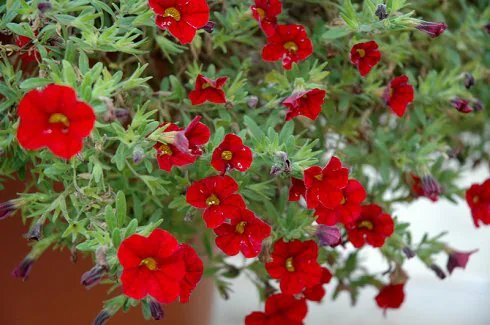Million Bells petunia
Calibrachoa, also called 'Million bells,' resembles the petunia except that it flowers longer and is much more tolerant of heat and drought
Denise Bush
Miércoles, 18 de enero 2017, 09:07
Calibrachoa is a relatively new genus of plants to many gardeners; the first cultivars weren't available until 1992 and there are still only about a dozen named varieties available in a wide range of vivid colours including soft pinks, bright fuchsia, purple and cardinal red. There are also bi and tri coloured varieties with subtle or contrasting mixes of colours.
Calibrachoa is a member of the solanaceae family and a cousin of the petunia. It is an easy-to-grow, low-maintenance plant that becomes smothered in petunia-like blooms from spring right through until the first frosts. In mild regions, with regular feeding, it may continue to flower all year round.
Calibrachoa forms a mound 15-20 cm high with long trailing stems which are ideal for covering the sides of large pots and hanging baskets. It can also be grown in borders as a ground cover plant. It is native to South America and was named after 19th century Mexican botanist and pharmacologist Antonio de la Cal y Bracho.
The majority of varieties available are hybrids and produce very little seed so propagation is best carried out by taking tip cuttings in early spring. Cover cuttings with a plastic bag to improve humidity. Rooting hormone will help to speed up the rooting process but is not really necessary.
Calibrachoa will flower best in full sun and is drought resistant for short periods. However, it will benefit from a good soak in a bucket of water once the top few centimetres of soil have dried out. Try not to get the foliage wet as this may encourage rotting. It is a heavy feeder and will need a liquid fertiliser added to the water every other week or a monthly sprinkling of granular feed to optimize flowering. The flowers drop when they are over so no dead-heading is needed although it may be necessary to give the plant an all-over trim in midsummer to help promote new growth. Although it will stop flowering for a little while while it recovers it will soon be smothered in pretty blossoms again.
